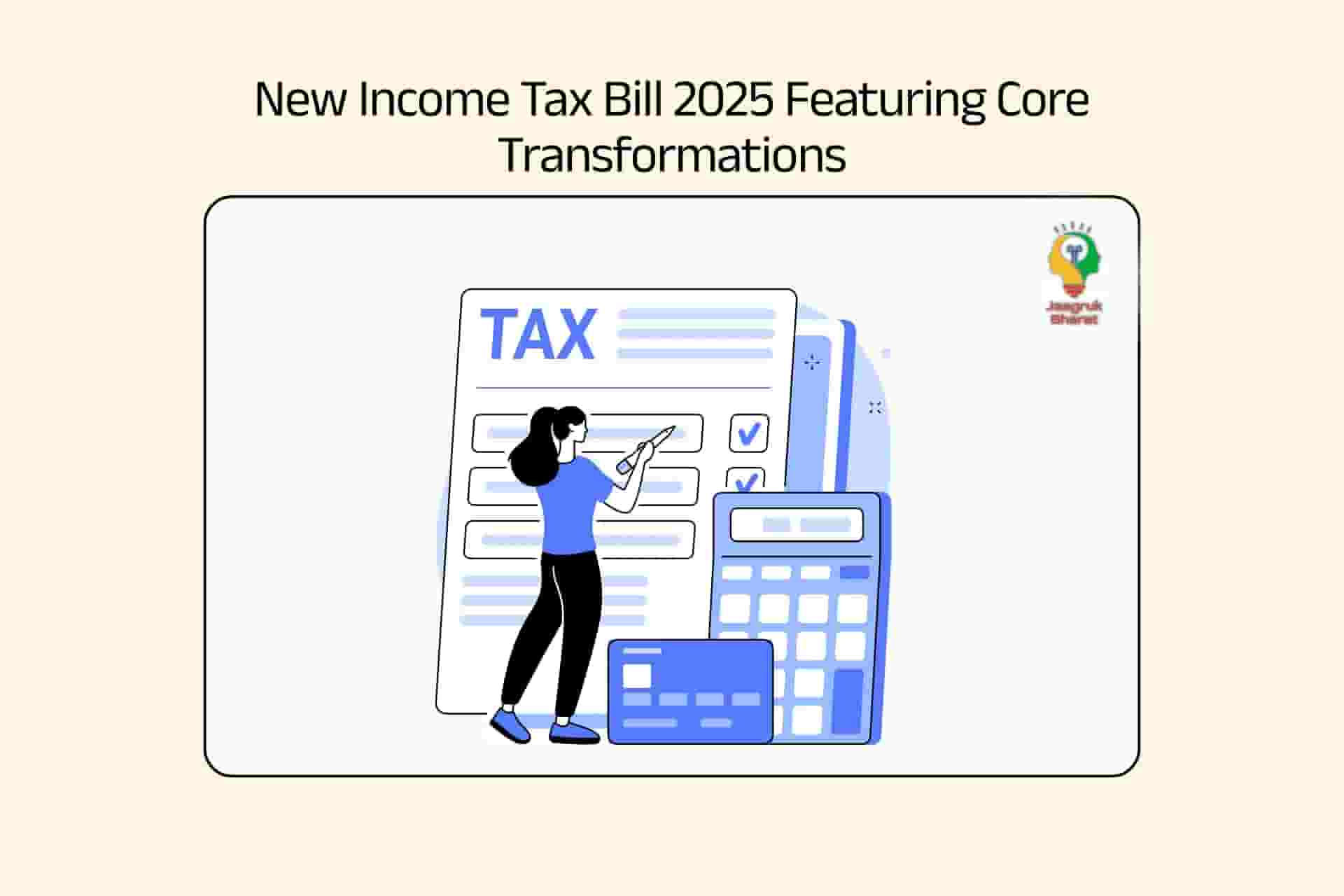The Indian Government Presents New Income Tax Bill 2025 Featuring Its Core Transformations
Updated: 09-10-2025 at 4:59 AM
1k


The government of India today presented the Income Tax Bill 2025 before Parliament to establish a modern tax structure for India. The proposed legislation targets the six-decade-old Income Tax Act of 1961 as it aims to optimise tax regulations while minimising conflicts and encouraging taxpayer self-regulation. The proposed law brings forth multiple important changes, including tax year definition, extended taxation categories, and tightened virtual digital asset supervision rules.
Also Read: Understanding The New Income Tax Bill 2025
Key Features Of The Income Tax Bill 2025
The Income Tax Bill 2025 contains various important changes that reform India's tax structure. The tax reform delivers simpler tax rules that combine with dispute minimisation efforts to support voluntary taxpayer Lookup compliance.
Introduction of 'Tax Year':
Tax Year serves as the new terminology which the bill defines as a consecutive 12-month period starting on April 1. New businesses or professionals apply the tax year system starting from their foundation date until the end of their financial year. The tax assessment process became more efficient because the assessment year system no longer exists.
Simplification of Language and Structure:
The 622-page bill presents its content through simplified language with no more explanatory text and redefines tax reporting terms and conditions. Stock options (ESOPs) get enhanced tax clarity while the legislation adopts the past sixty years of court rulings to enhance understanding.
Stricter Regulations for Virtual Digital Assets (VDAs):
The legislation implements enhanced restrictions regarding Virtual Digital Assets (VDAs) which now include cryptocurrencies together with non-fungible tokens (NFTs) when searching for undisclosed income. The government has established this measure to enhance the tax regulations for digital assets while promoting correct disclosure practices.
Also Read: 20 Easy Ways to Save Income Tax in 2025
Revised Tax Slabs Under The New Regime
The proposed tax slab revisions within this bill deliver tax breaks to people while also promoting spending behaviour. According to the improved structure, these tax brackets apply:
| Annual Income Range | Tax Rate |
|---|---|
| Up to ₹4 lakh | No tax |
| ₹4 lakh - ₹8 lakh | 5% |
| ₹8 lakh - ₹12 lakh | 10% |
| ₹12 lakh - ₹16 lakh | 15% |
| ₹16 lakh - ₹20 lakh | 20% |
| ₹20 lakh - ₹24 lakh | 25% |
| Above ₹24 lakh | 30% |
The modifications of tax brackets aim to provide financial benefits to taxpayers while encouraging them to increase their expenditures.
Salary Deductions And Compliance Reforms
Under the old tax system, individuals receiving salary benefits can maintain their current standard deduction value of ₹50,000. Employees who make payments according to Article 276(2) of the Constitution regarding professional tax will receive full tax deductions. The new Taxpayer’s Charter establishes novel guidelines for ensuring tax transparency as well as protecting taxpayer rights while working to prevent bureau-based difficulties.
Empowerment Of The Central Board Of Direct Taxes (CBDT)
Clause 533 in the new legislation grants the CBDT power to create tax administration provisions and digital monitoring tools and compliance frameworks which do not require continuous amendments of legislation. The new tax system intends to provide flexible and reactive governance that adapts to changing economic markets.
Also Read: Difference Between GST Compensation Cess And Income Tax Cess?
Contextualising The Reform: A Look Back At Past Budget Initiatives
After Finance Minister Nirmala Sitharaman announced tax dispute reduction in her July 2024 budget speech the government proceeded with a full-scale Income Tax Act review to deliver higher tax clarity. The reforms included duty reductions for selected products together with a new group to optimise business operations. The creation of beneficial growth requires expert-endorsed structural reforms in land and labour laws and workforce skill improvements together with reduced duties intended for protectionist purposes.
Conclusion
The Income Tax Bill 2025 marks a transformation in how India collects taxes. The government works to make taxes easier to understand while changing tax brackets for better control of digital asset transactions. The legislative journey of the bill will be reviewed for its financial and market effects.
Get the latest updates on government schemes and policies with Jaagruk Bharat. Join India's biggest Jaagruk Bharat community. Share your thoughts, questions, and your favourite topics for us to cover.
0
0
1k
0
0
1k Views
0
No comments available





Our Company
Home
About
T&C
Privacy Policy
Eula
Disclaimer Policy
Code of Ethics
Contact Us
Cancellation & Refund Policy
Categories
Women
Insurance
Finance
Tax
Travel
Transport & Infrastructure
Food
Entertainment
Communication
Government ID Cards
E-commerce
Traffic guidelines
Miscellaneous
Housing and Sanitation
Sports
Startup
Environment and Safety
Education
Agriculture
Social cause
Employment
Disclaimer: Jaagruk Bharat is a private organization offering support for documentation and government scheme access. We are not affiliated with any government body. Official services are available on respective government portals. Our goal is to make processes easier and more accessible for citizens.
All Copyrights are reserved by Jaagruk Bharat